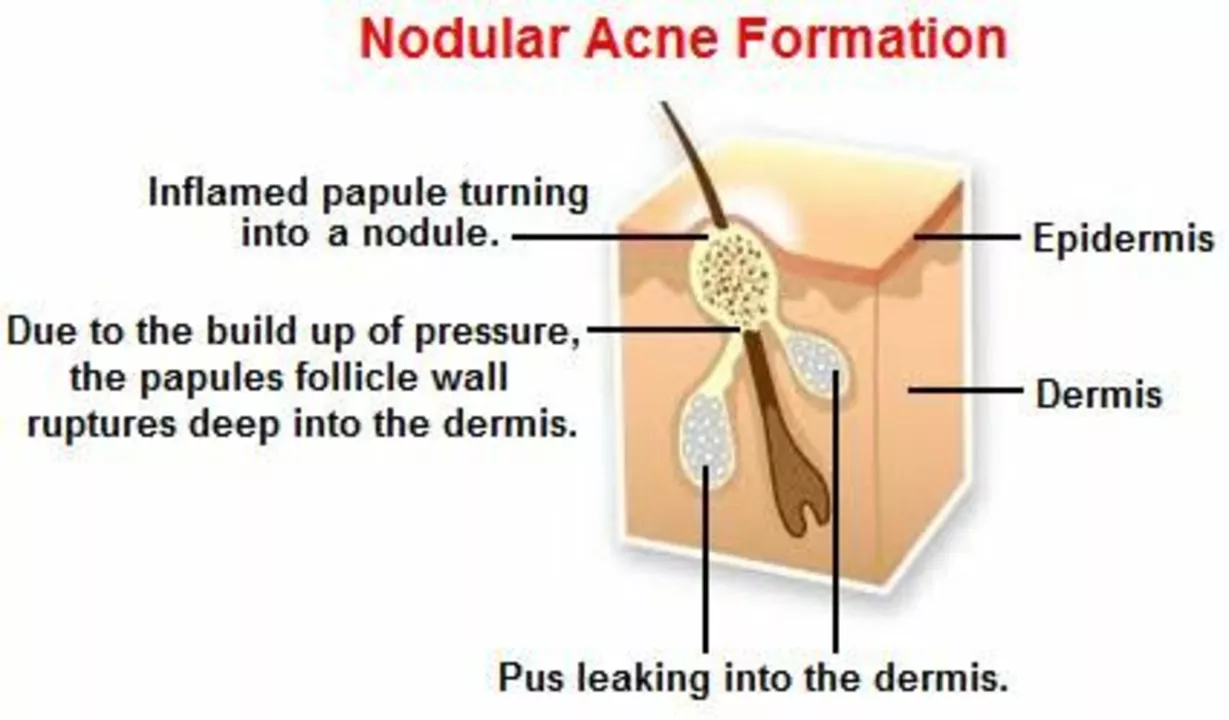If you’ve ever stared at a big, painful lump on your cheek or chin, you’re probably dealing with nodular acne. Unlike regular pimples, these bumps sit deep under the skin, feel sore, and can stick around for weeks. The good news? You don’t have to live with them forever.
Nodular acne forms when your pores get clogged with oil, dead cells, and bacteria – the same basics as regular acne. What makes it different is that the blockage goes deeper, causing a pocket of inflammation that swells into a firm nodule. Hormones play a big role, especially during puberty, menstrual cycles, or stress spikes. Genetics also matter; if your parents had bad acne, you might be more likely to get these tough spots.
Another hidden culprit is the type of skin products you use. Heavy creams, oily sunscreens, or even certain hair gels can clog pores and worsen nodules. And don’t forget diet – high‑glycemic foods and dairy have been linked to flare‑ups for some people.
The fastest way to shrink a nodule is a combination of topical and oral treatments. Over‑the‑counter options like benzoyl peroxide or salicylic acid can help keep surface bacteria low, but they usually aren’t enough on their own.
Prescription medicines are often needed. A dermatologist might suggest a short course of oral antibiotics (like doxycycline) to cut inflammation. For severe cases, isotretinoin (Accutane) is the most powerful option – it reduces oil production and speeds up skin turnover. Talk to your doctor about side effects before starting.
Topical retinoids (tretinoin, adapalene) are also gold‑standard for nodular acne. They encourage dead cells to slough off faster, preventing new blockages. Apply them at night on clean, dry skin and start with a pea‑sized amount – they can cause irritation if you overdo it.
Don’t underestimate the power of good skincare habits. Wash your face twice a day with a gentle cleanser, avoid scrubbing hard, and pat dry. Use non‑comedogenic moisturizers so your skin stays hydrated without clogging pores.
If a nodule is especially painful or looks infected (red, warm, pus‑filled), see a dermatologist ASAP. They can drain it safely under sterile conditions, which speeds healing and reduces scarring risk.
Speaking of scars, after the nodule clears you might notice dark spots or small pits. Products with vitamin C, niacinamide, or silicone gels help fade discoloration over weeks. For deeper pits, professional treatments like microneedling or laser resurfacing are options to discuss later.
Stress management can surprisingly improve acne. Simple habits – regular sleep, short daily walks, or breathing exercises – lower cortisol levels that otherwise trigger oil glands.
Lastly, be patient. Nodular acne doesn’t disappear overnight; most treatments need 4‑8 weeks to show results. Stick to the plan, keep track of what works, and adjust with your doctor’s guidance.
Bottom line: nodular acne is a deep, stubborn form of breakouts, but with the right mix of prescription meds, smart skincare, and lifestyle tweaks you can shrink those lumps and keep new ones from forming. Ready to give your skin a fresh start?

As a blogger, I've been researching the connection between stress and nodular acne development. It turns out that stress can play a significant role in triggering and exacerbating this severe form of acne. When we're stressed, our bodies produce more cortisol, which can lead to increased oil production and inflammation, creating the perfect environment for nodular acne to thrive. To manage stress-related nodular acne, it's essential to practice stress reduction techniques, such as mindfulness, exercise, and proper sleep. By tackling stress head-on, we can improve our skin's health and reduce the impact of nodular acne on our lives.
View more